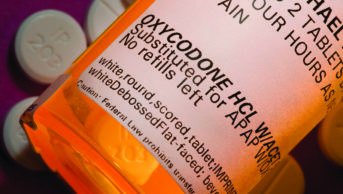
Sean Nel / Shutterstock.com
Phosphodiesterase type 5 (PDE5), the target of oral erectile dysfunction drugs, is part of a signalling pathway that is implicated in the development of malignant melanoma.
Now, a large Swedish population-based study, published in JAMA
[1]
(2015;313(24):2449–2455), has identified a modest but statistically significant increased risk of malignant melanoma in men who have used PDE5 inhibitors, with a multivariate-adjusted odds ratio of 1.21 (95% confidence interval 1.08–1.36) versus non-use.
The risk estimates were similar for three different PDE5 inhibitors and use of the drugs was also associated with an increased risk of basal cell carcinoma, which arises through a different pathway. The latter finding, together with other results — such as the lack of association with multiple filled prescriptions — prompt the authors to query whether the association is causal.


